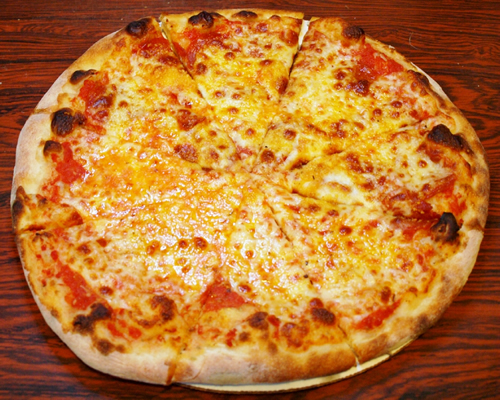
![]()
![]()
![]()
Domino's Pizza
CBD: 701 St. Charles Avenue
Late 1940s-late 1970s
![]()
![]()
![]()
Artista Pizza
Gentilly: 2941 Franklin Avenue
1960s-Late 1970s
![]()
![]()
Mr. Pizza
Many locations around town
1965-1980s
With a large population of immigrants from Southern Italy since the late 1800s, somewhere in town pizza must have been baked and served before World War II. But it wasn't until the late 1940s, when the pizza trend swept across America, that New Orleans had anything like a pizza parlor.
The first restaurant to make a specialty of pizza was Domino's, on the corner of St. Charles Avenue and Girod—where the tony French bistro Herbsaint is now. The national take-out pizza chain has no connection with the original Domino's in New Orleans. Nor, as it has been suggested, was it named for Fats Domino, who was becoming famous at the time.
Domino's "pizza pie" (which is what the menu and neon signs called it) was clearly based on the New York model, and it was well executed. Its thin crust held a restrained layer of sauce and cheese, plus everything else that you ordered on it. Perhaps their most distinctive pie was a garlic pizza: a cheese job sprinkled with a great deal of garlic. It was delicious, and as long as your date also ate it you wouldn't regret ordering it. Domino's set an atmospheric standard, too: a dark space only lightly renovated from some past use, with a juke box with a mix of hits from two highly disparate eras of popular music. (Elvis and Frankie Laine.)

Some of the new pizza parlors that opened across New Orleans in the 1960s were locations of chains. Others were existing Italian restaurants that decided to add pizza to their menus, whether they knew how to make pizza or not. The good ones were far outnumbered by the bad. The best pizzas of that generation were at the extinct Toney's Spaghetti House, Venezia and the Tower of Pizza, both still in business.
Here and there around town were some other good ones. The most memorable was Artista. A lot of this has to do with its location. It was in the lakeside corner of the Tiger Theater, a big old neighborhood movie house. In its final years in the late 1970s, the Tiger kept changing its name by rearranging the letters in its sign. It was the Riget (pronounced "ree-ZHAY", it showed art films), then the Grit (X-rated movies).
Artista was a terrific pizzeria, held in particular esteem by the student body of the University of New Orleans. They had a reason: Luigi's Pizza, across the street from the campus, was so terrible that UNO people would gladly make the run for Artista's much better pie.
Still, Artista had a battle on its hands. After the I-610 expressway cut through the neighborhood, Artista and the big empty theater were isolated and spooky. As if to confirm this, the owner of Artista in its last years had a revolver stuck into the waist of his apron, intentionally very visible. Somehow, his pizza remained great.
Meanwhile, a local chain called Mr. Pizza suddenly appeared. It was in almost every neighborhood: Metairie, Gretna, the Eighth Ward, River Ridge, you name it. It was heavily advertised on television with a memorable slogan: "World's Worst Pizza." It wasn't the worst, really. They threw their own crusts and baked their pizzas in the classic Blodgett stone-floored ovens. But it wasn't the best, either.
One of the most memorable innovations from Mr. Pizza—now widely practiced in places like The Italian Pie—was its use of pizza dough to make poor boy sandwiches. They'd partly bake it, make up the sandwich, and then finish baking the bread in the oven, so the whole thing came out hot and crisp. The chain fell apart in the 1970s, but some of the restaurants kept going for years. VIP Pizza in River Ridge started as a Mr. Pizza and has never closed, although it's not much like Mr. Pizza anymore.
This is one of 122 reviews of fondly-remembered but extinct restaurants from Lost Restaurants Of New Orleans, just published by Pelican. It's available in bookstores all around town, and full of photos, graphics, menus, and memorabilia.
